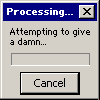Golden Years of F1..581 Mb 55 min


click photoAfter a year away in Rio de Janeiro, the F1 circus returned to Interlagos, where major upgrading work had been done although the drivers were still complaining about bumps on the newly-surfaced track. The field was the same as it had been in Argentina a fortnight earlier and once again it was the two Ligiers which were dominant with pole position going to Jacques Laffite once again and Patrick Depailler alongside him on the front row.



click photo for videoSince the dominant Ligier performances in South America the opposition had been working hard to perfect ground-effect technology and Ferrari had two of the new 312 T4 chassis ready for Jody Scheckter and Gilles Villeneuve. There were no changes in the driver lineup but after practice there was the rather surprising sight of the old Renault RS1 of Jean-Pierre Jabouille on pole position

click photoThe Formula 1 circus arrived in Zandvoort with Williams in dominant form, the team having won three successive victories at Silverstone, Hockenheim and Zeltweg. The scoring system meant that each driver could keep only his four best finishes from each half of the season and as Jones had collected only four points at the midway point he knew that his maximum score for the year would be 40 points. Jody Scheckter had amassed 30 points in the first part of the season and so Jones was not really a threat and the South African had picked up five points and needed only six more to be sure of beating Jones. The threat to Ferrari from Ligier and Lotus had faded completely. Scheckter's only real challenge therefore came from his teammate Gilles Villeneuve but as he was the Ferrari number two driver, Scheckter's position was solid

click photoThe field was slightly larger than normal at Monza with the return to the World Championship of Alfa Romeo which fielded a new 179 chassis for Bruno Giacomelli and the old 177 for Vittorio Brambilla, back in action for the first time since the crash at Monza the previous season. Ensign decided to give Formula 2 star Marc Surer a run in its car in place of Patrick Gaillard, while Hector Rebaque had his HR100 chassis ready for the first time.


1979 Canadian GPIt was the Austrian in the news in Canada, Lauda announcing in the middle of practice that he no longer wanted to be a Formula 1 driver, after completing a few laps in the all-new Brabham-Cosworth BT49. Brabham boss Bernie Ecclestone decided to put Argentina's Ricardo Zunino in the car.

The final race of the season saw a field of 30 cars fighting for 24 grid positions. There were no driver changes and after qualifying Alan Jones, winner of four of the previous five races, was on pole position again. The main interest of the event was whether or not Jones would finish runner-up to the new World Champion Jody Scheckter or whether his Ferrari team mate Gilles Villeneuve would be able to hold him off

